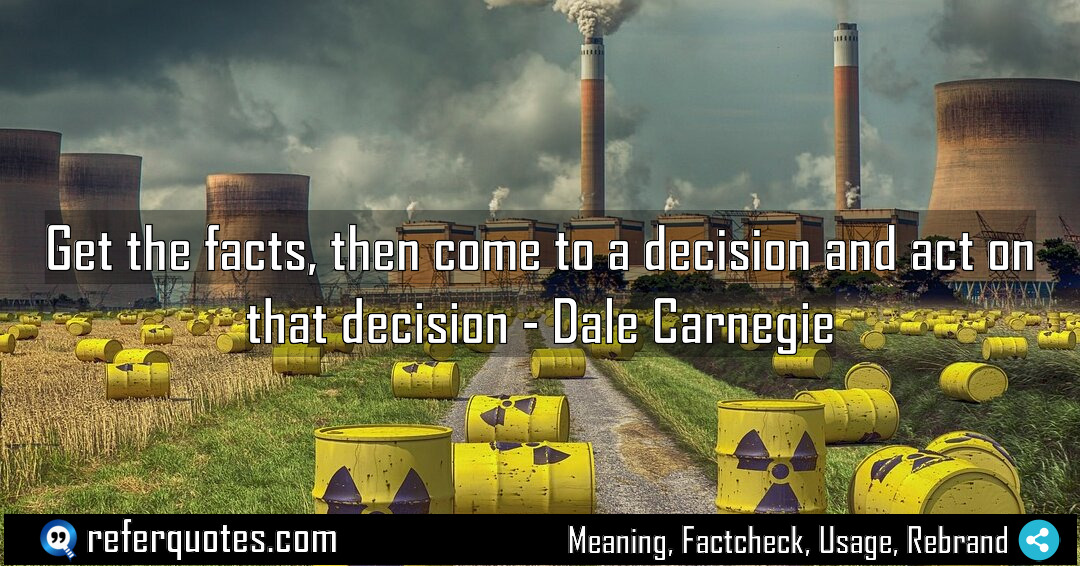Get the facts, then come to a decision… It sounds simple, but this three-step process is the ultimate antidote to the paralysis of overthinking and worry.
Share Image Quote:Table of Contents
Meaning
The core message is a disciplined, three-part formula to cut through anxiety and indecision: Investigate thoroughly, judge clearly, and then execute decisively.
Explanation
Look, I’ve seen so many talented people, myself included, get stuck in what I call the ‘analysis swamp.’ We research and research and worry and research some more. Carnegie’s genius here is in forcing a sequence. You’re not allowed to worry during the ‘get the facts’ phase—that’s a pure data collection mission. Then, and only then, do you allow yourself to make a judgment call. But the real magic, the part most people skip, is acting on that decision. That action, that forward momentum, is what kills worry dead. It’s a system that replaces emotional chaos with a productive workflow.
Quote Summary
| Context | Attributes |
|---|---|
| Original Language | English (3668) |
| Category | Business (233) |
| Topics | decision (31) |
| Emotion / Mood | provocative (175) |
| Overall Quote Score | 63 (28) |
Origin & Factcheck
This is correctly attributed to Dale Carnegie. It comes straight from his 1948 classic, How to Stop Worrying and Start Living, published in the United States. You won’t find this one misattributed to Ben Franklin or Churchill; it’s pure Carnegie, born from his work in self-improvement and human relations.
Attribution Summary
| Context | Attributes |
|---|---|
| Author | Dale Carnegie (408) |
| Source Type | Book (4032) |
| Source/Book Name | How to Stop Worrying and Start Living (31) |
| Origin Timeperiod | Modern (530) |
| Original Language | English (3668) |
| Authenticity | Verified (4032) |
Author Bio
Dale Carnegie(1888), an American writer received worldwide recognition for his influential books on relationship, leadership, and public speaking. His books and courses focus on human relations, and self confidence as the foundation for success. Among his timeless classics, the Dale Carnegie book list includes How to Win Friends and Influence People is the most influential which inspires millions even today for professional growth.
Official Website |Facebook | X | Instagram | YouTube |
Where is this quotation located?
| Quotation | Get the facts, then come to a decision and act on that decision |
| Book Details | Publication Year/Date: 1948 (first edition) ISBN/Unique Identifier: 9780671035976 (widely available reprint) Last edition. Number of pages: Common Pocket/Simon & Schuster reprints ~352–464 pages (varies by printing) |
| Where is it? | Chapter How to Analyze and Solve Worry Problems, Unverified – Edition 1948, page range ~96–110 |
